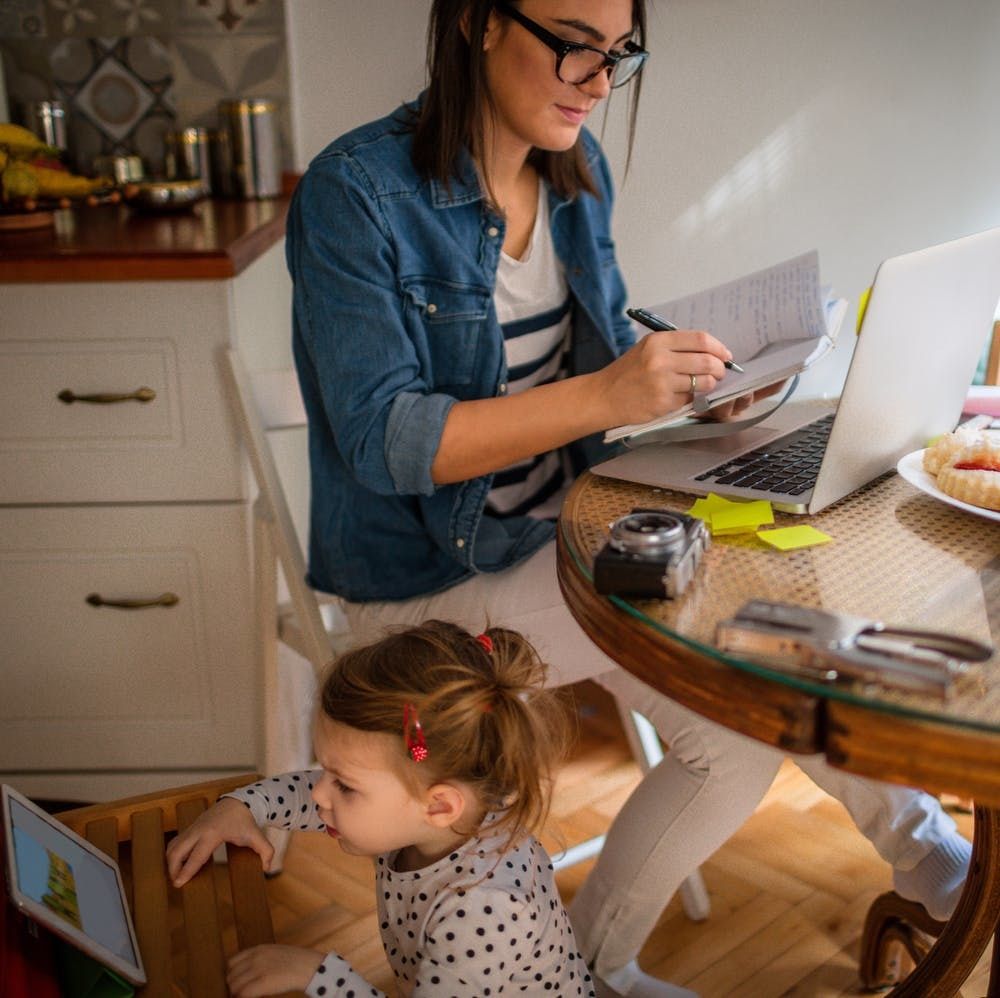Thinking about the role of women at work over the last few decades, you might guess that conditions have become much better. After all, there are more women CEOs of Fortune 500 countries than ever before, and women are getting masters and doctoral degrees at higher rates than men. But the surprising truth is that general employability has actually been getting worse for women since the year 2000, especially for working moms and families who have trouble paying for child care.
So first, let’s backtrack by reiterating how encouraging and exciting it is that women are gaining some ground at the highest levels of the corporate ladder. This is great! But the overall number of women with paid jobs has decreased in the last 17 years, according to the New York Times — and that decline probably isn’t entirely by choice.
In 2000, 60 percent of women 16 years old and older had paying jobs, and now that number is down to 57 percent, totaling 12.7 million more women without paid work compared to 17 years ago. For women ages 25 to 54, which the Times reports are the “prime working years” for women, there’s been an overall three percent drop in workforce participation since 2000, from 77 percent to 74.
Now, these aren’t huge numbers. But it’s worth pointing out that other countries with similar economies, like Britain, have seen the exact opposite phenomenon. So, what is going on here?
There are a number of contributing factors at play, including the gender wage gap (which is much more pronounced for women of color compared to white women), the automation of jobs, and a job market that is now saturated with women holding bachelors degrees. But unlike nations with similar economies, the US government provides very little if any support for working moms, especially when it comes to child care.
Rachel, an environmental consultant and the mom of a baby girl, tells Brit + Co that it’s been difficult to find full-time child care at a reasonable price. Her daughter is currently in a part-time home daycare while Rachel works part-time and her husband works full-time, but looking ahead to needing full-time care is financially daunting.
“If I move my daughter to a center to receive full-time care, we will be paying over $10,000 more a year,” Rachel says. She adds that salaries in her industry are not paying as much as they did before she became a mom, which adds to the challenges of paying for more child care.
The challenges Rachel and her family are facing are not at all uncommon. According to a 2013 report from the National Bureau of Economic Research, nearly one-third of the drop in women’s employment between 1990 and 2010 can be attributed to the fact that the government has done very little to subsidize the high cost of child care.
A 2016 report from Care.com, a company that connects families with child care providers, found that on an annual basis, families pay an average of $10,468 for child care in a center, and $28,905 for a nanny for just one child. Babysitters who care for kids after school can be expensive as well, costing an average of $232 per week. For low wage-earning parents who might also have to work late or non-traditional hours, it can be impossible to keep up with the costs.
Despite the fact that many moms aren’t able to work as much as they want or need to because their child care needs aren’t being met, the issue hasn’t been much of a national priority, though some politicians are taking action. Last year, three Democrats introduced the Child CARE Act to Congress, which would help subsidize the cost of high-quality child care for families living in poverty. The bill went through a few different congressional committees, but no action has been taken on the Child CARE Act since March of 2016.
Some advocates for more affordable child care were hopeful when first daughter Ivanka Trump started lobbying for better child care options for working moms, but critics noted that her plans were pretty superficial, and wouldn’t help low-wage earning moms. Money reports that under Ivanka’s plan, which would offer child care tax deductions for single parents making $250,000 or less and couples earning $500,000 or less, would only amount to a rebate of up to $1,200 a year for low-income families. That comes out to just five weeks of after-school babysitters, or less than two months of child center care, based on the averages found by Care.com.
Clearly, today’s working moms need much more help than what’s currently offered. When child care is so expensive that it’s almost not worth it to go back to work, families are put in a position where it costs so much more just to go to work at all. With women’s share of the workforce declining, there’s a real need to help moms who want to work, starting with making child care affordable for all families.
Do you have thoughts on working moms and the cost of child care? Tell us on Twitter @BritandCo.
(Photos via Getty)
